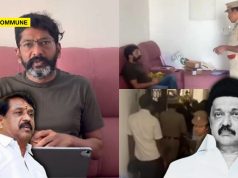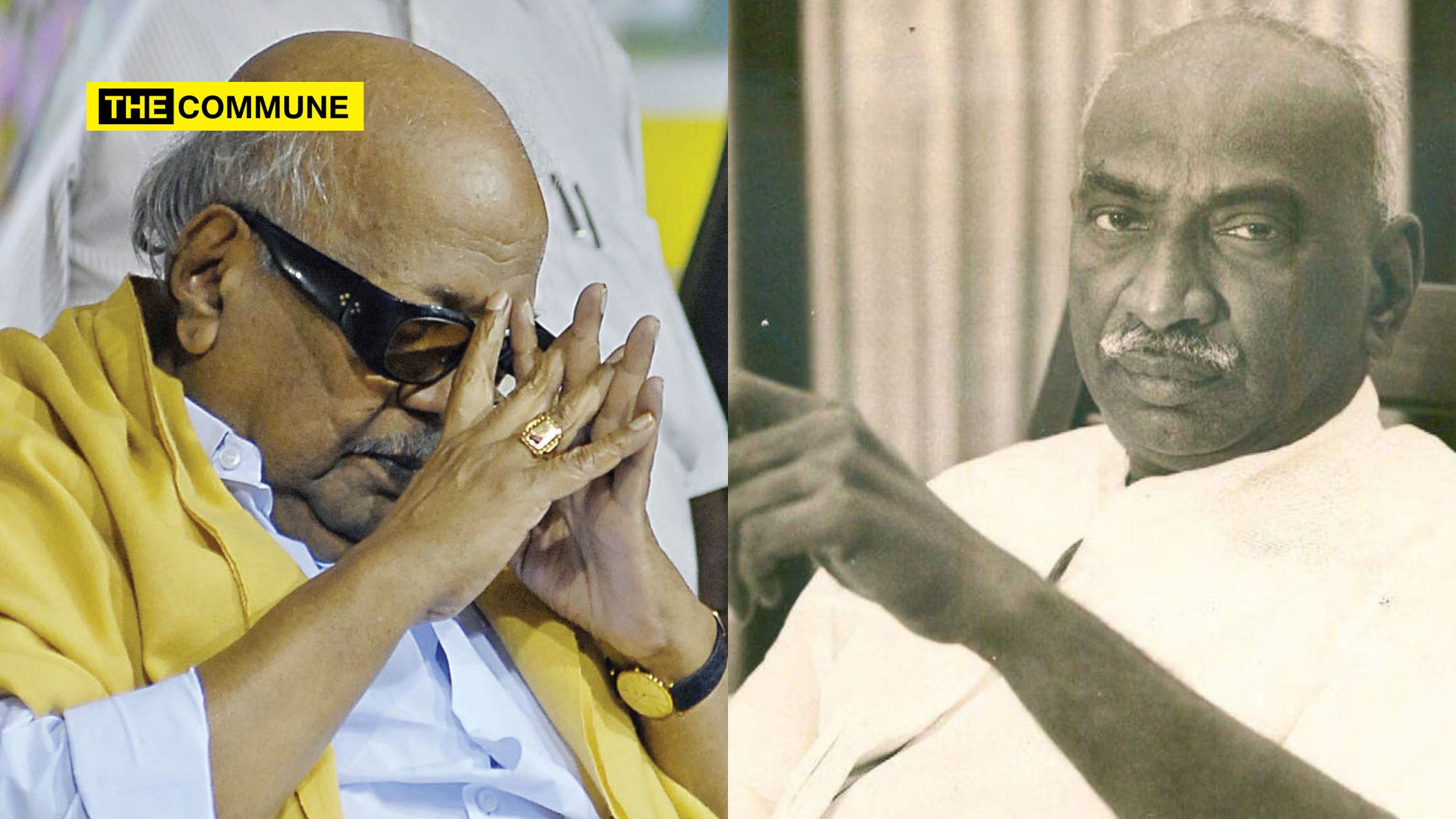
Kamaraj hailed as the father of education in Tamil Nadu, remains a towering figure embraced by all generations, transcending political affiliations. Despite his relatively brief tenure from 1954 to 1963, his legacy endures. Even today, politicians evoke his era, promising “Kamaraj governance” to win votes. Kamaraj, known for his administrative prowess and his role as a kingmaker in politics, remains a revered figure in Tamil Nadu. Despite his lack of formal education, Kamaraj, while serving as the chief minister of Madras, championed initiatives such as free education for the underprivileged and the implementation of the free Midday Meal Scheme. Remarkably, he never completed his own schooling. In recognition of his contributions, he was posthumously honored with India’s highest civilian award, the Bharat Ratna, in 1976. US Vice President Hubert Humphrey hailed Kamaraj as “one of the foremost political figures across the free world” in January 1966.
Today, we are reacalling Kamaraj because of a viral video on social media, featuring NTK chief coordinator Seeman discussing instances where the late former Chief Minister Karunanidhi insulted and mocked Kamaraj. Seeman mentions three occasions in the video where Karunanidhi insulted Kamaraj. On one occasion, when Karunanidhi conversed with a leader and inquired about the leader’s whereabouts, the leader responded by mentioning that he had visited ‘Perunthalaivar‘ (Tall Leader) Kamaraj. This remark sowed seeds of jealousy in Karunanidhi to designate all panchayat council chiefs as Perunthalaivar. Seeman proceeds to recount another incident where Karunanidhi disparaged Kamaraj’s visit to Russia by stating, “Earlier we used to send buffalo skins to Russia, now we have sent buffalo itself to Russia.” Additionally, Seeman recalls another incident where Karunanidhi referred to Kamaraj as the “Son of a woman who sells dried fish in Virudhunagar.”
— A Selvaraj (@Crime_Selvaraj) April 2, 2024
Certainly, the three incidents mentioned above are indeed factual. During his tenure as Chief Minister, the late DMK leader Karunanidhi mandated that all panchayat council chiefs be addressed as “Perunthalaivar.” However, this directive was rescinded on 3 April 1987 after MG Ramachandran (MGR) assumed power. Nevertheless, in certain areas, the practice persists.
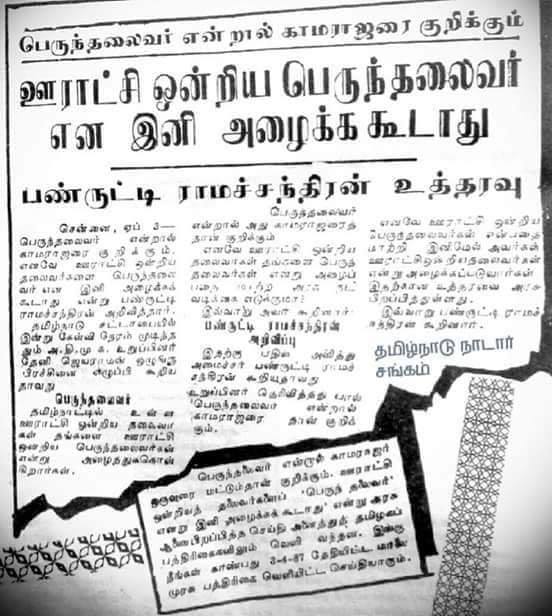
Kamaraj, in his capacity as the chairman of the Indian National Congress, embarked on a visit to the Soviet Union. Initially, there seemed to be some uncertainty on the part of the Soviet government regarding how to regard Kamaraj. However, they eventually concluded that despite his official position, he held significant importance in India at that time. During his trip, Kamaraj visited Dushanbe, Volgograd, and Leningrad. His meetings with Aleksei Kosygin, the Soviet premier, and Leonid Brezhnev, the General Secretary of the Communist Party of the Soviet Union, were well-documented events. During his speech, Karunanidhi made derogatory and racially charged remarks about Kamaraj, referring to him as a buffalo due to the color of his skin.
Other Occasions Where Karunanidhi Derogated Kamaraj
On 8 February 1957, in Murasoli magazine, Karunanidhi, serving as the chief editor at the time, published a controversial cartoon that depicted a derogatory portrayal. The cartoon featured a black woman undergoing makeup to resemble Kamaraj, with another figure representing Prime Minister Nehru as the makeup artist. The caption accompanying the cartoon read, “The true Tamilian is getting ready for vote hunting.” This portrayal aimed to ridicule Kamaraj for his deliberate decision not to marry. Karunanidhi ridiculed him by likening him to a woman dressed in a saree and wearing a nose pin. This has been widely condemned as one of the most disgraceful instances of mockery in political history, stemming from jealousy over Kamaraj’s effective governance.
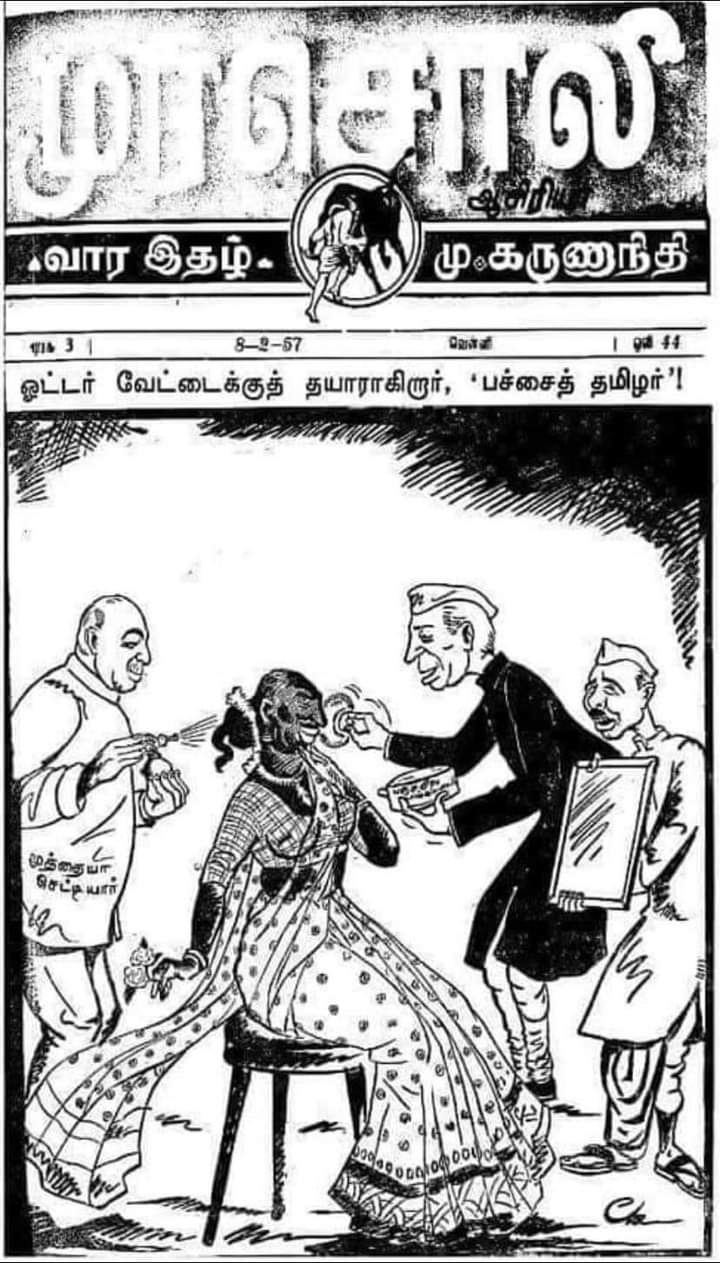
In the same Murasoli magazine dated 8 November 1957, Karunanidhi portrayed Kamaraj wearing a saree in a cartoon. In this one cartoon depicted Kamaraj seeking favors by massaging the legs of EV Ramasamy. In a subsequent cartoon, Karunanidhi depicted Kamaraj forcefully driving away EV Ramasamy, with a caption titled “True Tamilans, True treachery.” Once again, he created a cartoon mocking Kamaraj by portraying him as a woman.
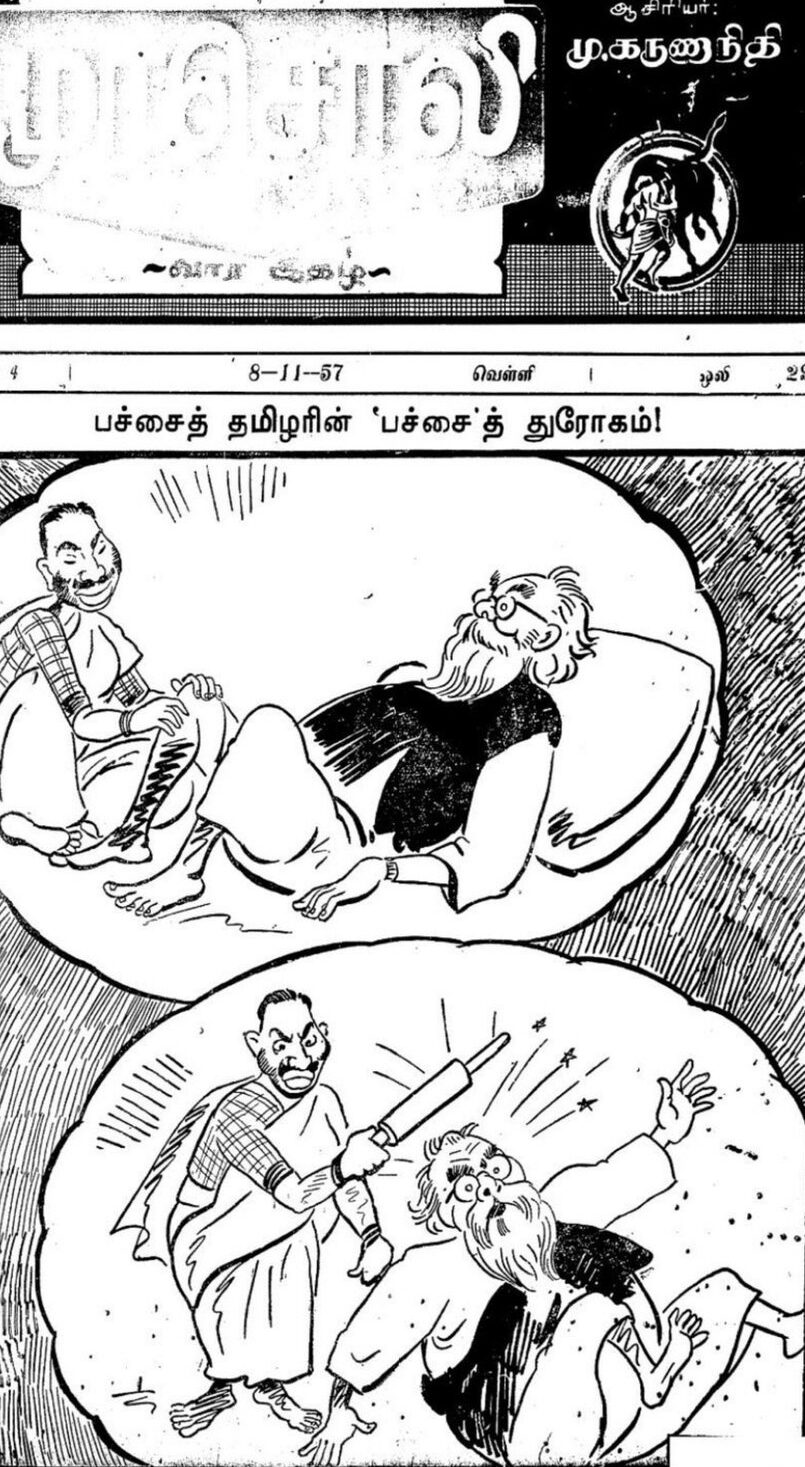
In the 1956 Pongal Malar edition of Murasoli, Karunanidhi featured a cartoon series titled ‘Kamarajar Puranam‘ where he portrayed Kamaraj as prostrating before a Brahmin. This one was titled “A Brahmin Slave.”
Additionally, another cartoon depicted Kamaraj as a porter carrying the agendas of Prime Minister Nehru titled “Mere worker for North Indians“, which not only insulted both leaders but also demeaned the profession of the downtrodden who earn their livelihood through hard labor. Karunanidhi promoted a misleading narrative among the impoverished population of Tamil Nadu, portraying himself as a constructive force. However, in truth, Kamaraj held significant political sway as a kingmaker. His renowned “K plan” garnered praise, with even Prime Minister Nehru seeking counsel from Kamaraj. Following Nehru’s passing, Kamaraj played a pivotal role in determining who would assume the prime ministerial position in Delhi.
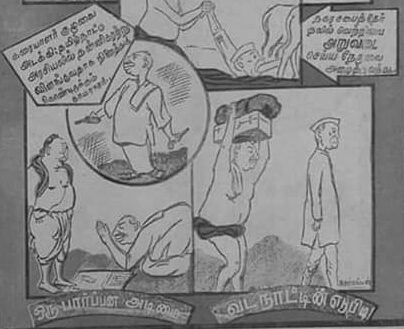
In 1970, amidst the Murasoli controversy surrounding the Pongal Malar, Karunanidhi published a cartoon that not only disrespected Kamaraj but also offended Hindu sentiments. In the cartoon, Kamaraj was depicted as a semi-clothed woman resembling a Hindu goddess, and Kakkan, another esteemed leader of the Congress known for his neutrality, was portrayed as a male Hindu deity. This portrayal was titled “A handmade dirty Pillayar,” adding insult to injury for many Hindus. Kakkan, hailing from a Scheduled Caste background, rose to the position of Home Minister. Despite his stature, even in his passing, he relied on a government hospital for his medical care. Surprisingly, he lacked financial resources at the time of his demise. The DMK, which boasts of advocating for social justice, ironically subjected such a man to derogatory caricatures, despite his significant contribution to the state.
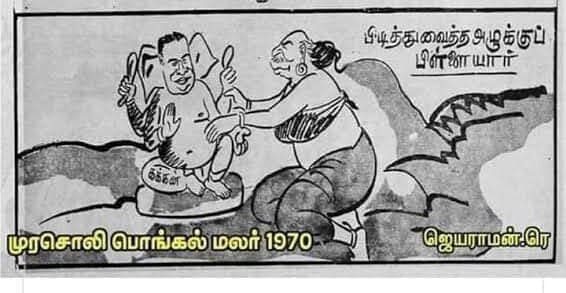
The DMK, particularly under the leadership of Karunanidhi, has been cunningly focused on establishing their dynasty’s perpetual rule, ensuring that no other entity or ideology can rival theirs. This ambition has been meticulously sustained over five decades, exemplified by Karunanidhi’s refusal to permit a memorial for Kamaraj on Marina Beach, despite widespread pressure from various leaders. This illustrates Karunanidhi’s jealousy, as he seeks to monopolize praise and spotlight in Tamil Nadu, deterring any potential contenders from gaining recognition.
So even @the_hindu quoting party colleagues of #Kamaraj says #Karunanidhi turned down request for a memorial on Marina
Wondering what Vikatan based their article on. MuKa may have praised Kamaraj but refused Memorial on Marina was my pointCc: @dhanyarajendran for fact checking pic.twitter.com/R3U64RR8xU
— Suresh (@surnell) August 9, 2018
Legacy Of Kamaraj
During Kamaraj’s tenure as Chief Minister, often referred to as the golden era, significant strides were made in education and infrastructure development. Under his leadership, the local education rate soared from a meager 7% during the colonial era to a commendable 37% after his reforms. These reforms not only increased the number of schools but also focused on enhancing educational standards. Measures such as extending the number of working days to 200, reducing unnecessary holidays, and devising syllabi to accommodate various abilities were implemented.
Additionally, Kamaraj, alongside Bishnuram Medhi, the Governor, played pivotal roles in establishing prestigious institutions like IIT Madras in 1959. In the realm of irrigation, major schemes were undertaken, resulting in the construction of dams and canals across various regions including Bhavani, Vaigai, and Amaravathi. These projects significantly expanded cultivable land, with notable successes such as the Lower Bhavani Dam in Erode district, which brought over 200,000 acres under cultivation.
Furthermore, Kamaraj’s era witnessed the inception of several industrial ventures with substantial investments. Projects like Neyveli Lignite Corporation, BHEL at Trichy, and Manali Refinery marked milestones in industrial development. Moreover, industries such as paper, sugar, chemicals, and cement flourished during this period. His retirement marked a remarkable nine years of service as the chief minister, setting an unmatched record in the history of Madras State. While subsequent chief ministers may have served longer in cumulative terms, none have achieved the level of uninterrupted tenure that Kamaraj held during his time in office.
A figure such as Kamaraj will be eternally honored and revered by people across generations, despite attempts by politicians like Karunanidhi to overshadow his legacy by naming infrastructure projects after their own family members, such actions cannot conceal the genuine patriotism embodied by individuals like Kamaraj. When Kamaraj initiated the opening of irrigation canals to supply water to farmers for agricultural purposes, Karunanidhi, on the other hand, facilitated the proliferation of liquor shops, exacerbating the misery of the poor by providing unrestricted access to alcohol.
Subscribe to our channels on Telegram, WhatsApp, and Instagram and get the best stories of the day delivered to you personally.

